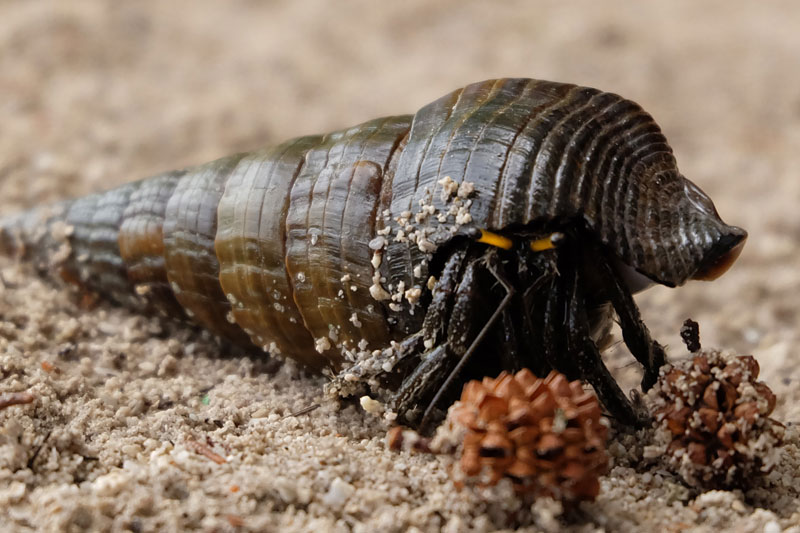In this article we will be covering some questions and answers that you might have in mind that will make you realize that there’s a lot you don’t know about yet about your hermit crabs.
How can I make my hermit crabs more active?
- Your hermit crabs are nocturnal animals, which means they are active during night time and asleep or inactive during the day. One of the things you can do is check your hermit crabs’ tank temperature, if they are not that active even during night time, then check the temperature and the humidity of the tank. If the environment is not the issue, you can also add ‘toys’ in their tank such as plants, corals, stone, and driftwood that they can start exploring.
How do I determine the age of my hermit crabs?
- The best indication is if they have small teeth on the big claw. In most cases this indicates the age of your hermit crab. The more teeth present on the big claw, the older your hermit crab is. Size is also another factor to determine the age. And fun fact, your hermit crabs can live up to 15 years!
Do Hermit Crabs Hibernate?
- Yes they do, but do note that hibernation in hermit crabs is not normal so take note of the temperature of their tank. If the tank’s temperature goes below 20°C (68°F) this means that your hermit crab is being forced to hibernate since this is not their suitable temperature. Act fast and make sure they met the normal temperature of 23°C -29°C (75-85°F)
Which substrate is recommended for keeping hermit crabs?
There is variety of recommended substrates that your hermit crabs can use:
- River or sea sand: It’s cheap and accessible, but note that it’s difficult to wash away the dirt from it and it can be used a lot of times. Also drying it will take up a bit of time, so be wary of fungi that might develop on it.
- Gravel: Just like river and sea sand, it’s accessible as well. But the great thing about it is compared to those two, it’s a lot easier to wash and you can also use it a lot of times. You may also combine it with sand, just be sure that you’re going to use shallow and smooth gravel.
- Crushed corals, reef sand: probably difficult to access depending on your area, but this substrate are rich in calcium and minerals, but the downside of this is it can only be used once. And note that you should rinse and dry this thoroughly before you use it for your hermit crabs.
How do I choose the shells for my hermit crabs?
- As time passes by, your hermit crabs will be needing new shells especially if they are growing up and if you’re taking care of multiple hermit crabs. These shells should be cleaned thoroughly by cleaning the insides and out of the shell and sterilizing them as well. You should also ensure that the shells isn’t damaged. Do note of the following feature:
- Shell of the same size of your current hermit crab
- Slightly smaller and larger shells if you’re taking care of more than one hermit crab and this can be handy as well if one of your hermit crabs starts to molt.
What types of food can I feed my hermit crabs?
- Your hermit crabs need to have a balance and healthy diet. It’s fine if you’re going to resort for hermit crab feeds found in pet shops, but it’s always better if you feed them something that you prepared yourself since you know if it’s healthy or not or doesn’t include any extenders that will harm them in the long run. Here are some of the foods that you can feed them:
- Fruits such as coconuts, papayas, bananas, grapes, and mangoes (fresh or dried)
- Vegetables such as: eggplant, cabbage, carrot, and asparagus.
- Nuts such as walnuts and almonds – make sure they are unsalted
- Grains & seeds such as: oats, bran rice, sesame seeds, or chia seeds
